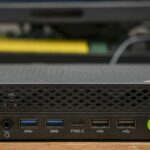The much talked about and still unconfirmed Apple Glass wearable may have just been leaked along with a release date.
In a report published by Bloomberg, sources familiar with the issue have said that Apple is working on new chips. Specifically it’s working on processors for smart glasses.
The Apple glasses are posing a challenge to Apple in that they require a lot of processing power yet need to remain lightweight and drain minimal battery.
As such, the report says that Apple is working on chips that are based on those used in the Apple Watch. But since this model will need to manage data from multiple external facing cameras, for real-world interactions, it will need to be built to task.
The report claims that these chips should go into mass production by summer 2026, suggesting they could appear in the new Apple Glass that same year.
Apple Glass AR
Apple has been working on its AR products for years now, perfecting the apps in iOS across its iPhone and iPad devices. Then there is the Apple Vision Pro experience which is fully fledged AR. So the switch into a glasses based wearable not only makes sense but is something Apple is primed for.
Apple is reportedly working on a version with AR and one without. The version without, codenamed N401, will likely be similar to the Meta Ray-Ban glasses which offer call control, photography and digital assistant features.
It is claimed that Apple will combine the world sensing abilities of the Apple Watch and AirPods with new chips that can all feed into the experience through the glasses. The AirPods new chip is reportedly called Glennie while the Apple Watch variant is known as Nevis.
Processing a problem
The issue Apple faces is creating a processor that can handle lots of inputs from cameras and other sensors, while processing communications to and from the user. All that while staying lightweight, compact and battery friendly.
Since that’s all near impossible, at scale, it has been suggested that Apple may offload some of the processing to the user’s iPhone, essentially spreading the processing load.
So while we’re looking at a whole new generation of device, it could mean people are pressured further into the Apple ecosystem if they want to get the best out of what’s available from Apple.
Please enable Javascript to view this content
Read the full article here















